Hakka Earthen Buildings & Fabulous Xiapu Mudflat
Unlike the famous Beijing, Shanghai and Guilin, Fujian Province is often ignored by foreign tourists. In fact, there are two masterpieces deserving your attention - Tulou and Xiapu mudflat. One is built by indigenous Hakka people, and one is carved by nature.
Tulou is the embodiment of Hakka Culture and it’s the residence and fortress of Hakka people. This earth building complex is the distinguished one in the art of architectural world and has listed as a UNESCO World Cultural Heritage. It’s the great place for architectural photography and Hakka Culture photography. While, Xiapu is called the “most beautiful mudflat in China” and “photographer’s paradise”. Every year, numerous shutterbugs come here from various places around the world and have successfully recorded the affecting beauty through clicks. And this 6-day photography tour is the best combo to shoot the most beautiful architecures and landscape as well as folk cultural life of Hakka people and seashore fishermen at Fujian Tulou villages and Xiapu mudflat area.
This Fujian photography tour can be customized depending on which sites you want to visit, what photos you want to take, and on the weather condition when you go. Feel free to tell your interests and ideas to your personal travel consultants when booking the tour!
Travel Route: Xiamen / Nanjing Tulou / Yongding Tulou / Xiamen / Xiapu
Travel Length: 6 Days
Tour Code: CD-PTTXT-06
Tour Type: Customizable Private Tour
Departure: You Choose (you may plan it according to the best season and time.)
Welcome to Xiamen, the Garden City on the Sea! Your local guide and driver will meet you at the arrival hall of Xiamen airport or railway stations and then escort you to your hotel at Xiamen downtown and help you with the check-in. The rest of today is on your own to explore this beautiful city.
Arrival Ideals: Xiamen has frequent daily flights from Hong Kong, Guangzhou, Shanghai, Beijing, Chengdu, Xian, Kunming, etc. Besides, you can take a bullet train from Hong Kong, Guangzhou, Shenzhen, Hangzhou, Guilin, Fuzhou, Huangshan, and so on.
Evening Idea: take a leisure walk at Zhongshan Road Pedestrian Street where you’ll appreciate lots of beautiful old arcade buildings in Chinese, Western and South Asian styles and also some local popular food for a good try!
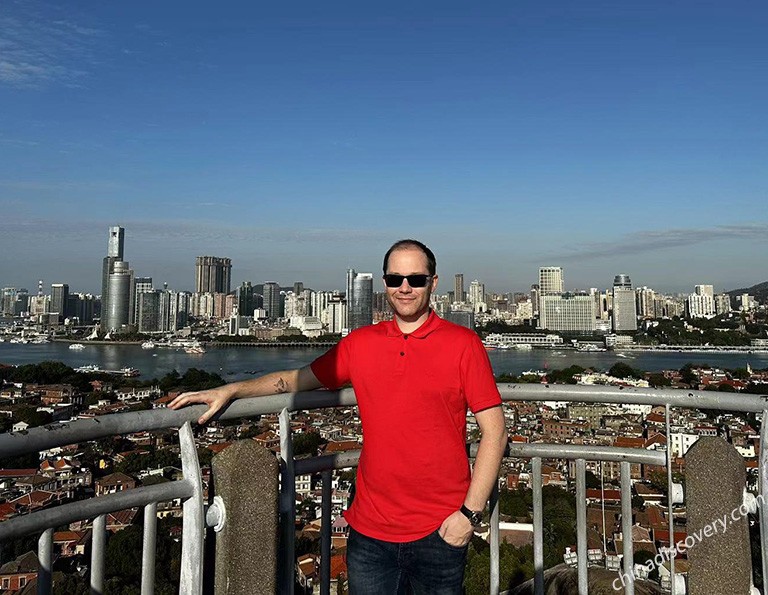
After breakfast, your guide and driver will meet you at your hotels and then escort you to take pictures of the earthen buildings (Tulou) in Nanjing County with a 3-hour scenic drive. Nanjing Tulou is a key part of Fujian Tulou that are the traditional dwelling houses of Chinese Hakka people with round, square or rectangular appearance for living in family groups and have been listed as UNESCO World Cultural Heritage site in 2008.
First, walk up to the viewing platform to shoot the panorama of the must-see Tianluokeng Tulou Cluster from the best angle, which is the most famous earthen building cluster known as “Four Dishes and a Soup” with 3 round, 1 oval and 1 rectangular well preserved earthen building looking really like a set of meal on the natural tablecloth of the lush mountain an graceful rice terraces surrounding.
Next, go to capture Yuchang Building that was built during 1308-1338. It is the present oldest Tulou and the largest and highest round Tulou with highest floor height in Nanjing region. Also, it is famous as “Zigzag Building” because it looks about to totter with a maximum inclination of 15 degrees due to weather beats and earthquakes, however, it stands quite still till nowadays. Walk into this Tulou and closely look at the zigzag wooden pillars which have well supported such huge building for over 600 years.
Then, take photos of Taxia Village. With an “S” shaped stream floating across the entire village, two earthen buildings located just right on the two curves, and multiple big and small Tulou built along the banks, this village is reputed as a “Water Town of Taichi” with rich Tulou flavor. You will not miss Yude Building known as “Apron Building”, Deyuan Hall with outstanding sculptures of birds, beasts and flowers and also the 24 Hakka stone flagpoles beside the semilunar pond.
After today’s shooting, your guide and driver will escort you to your hotel at Taxia Village and help you with the check-in procedure. Enjoy your overnight with rural Hakka Tulou surrounding!
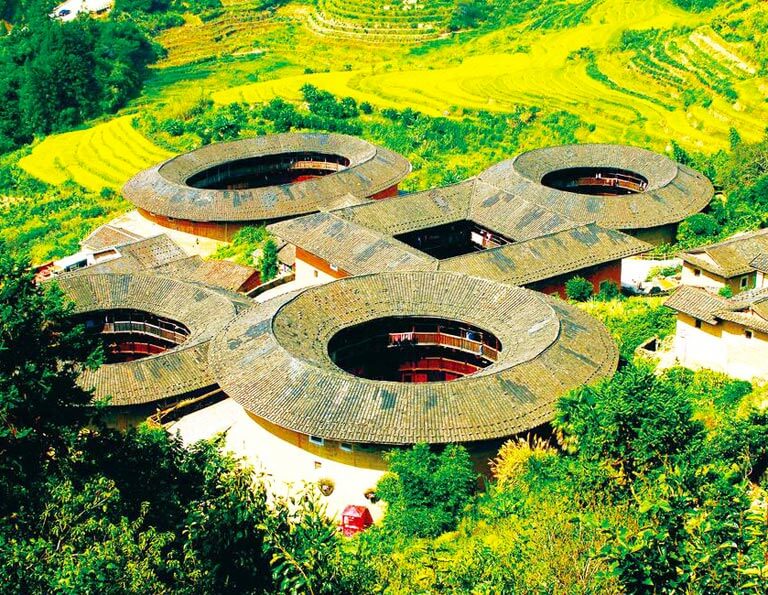
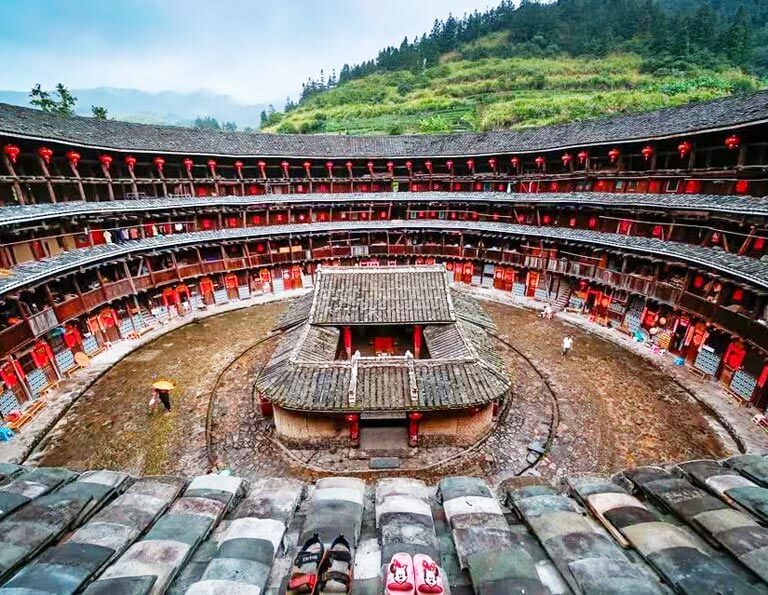
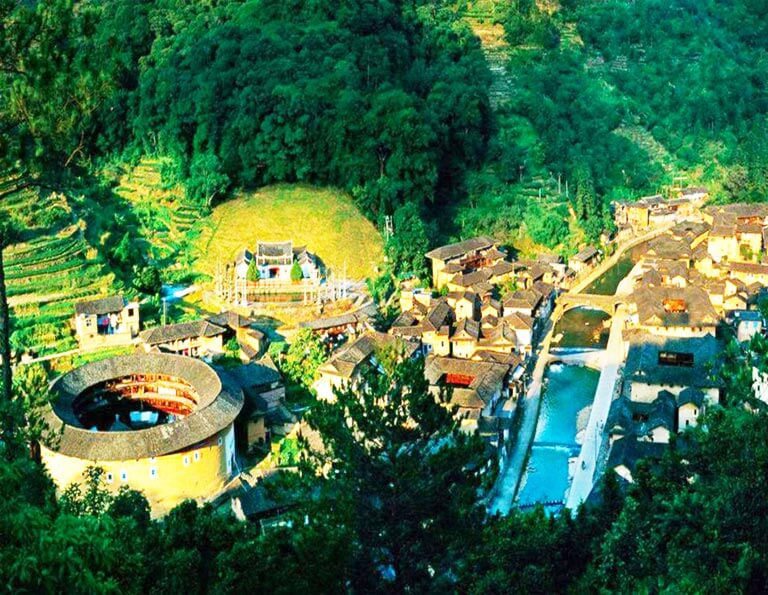
After breakfast today, you will go to take photos of Yongding Tulou with a 20 minutes’ drive.
First, go to Hongkeng Tulou Cluster and shoot Zhencheng Building from 1912 that is praised as “Prince of Tulou” and famous for its splendid design and exquisite interiors according to China’s traditional culture of Bagua. Have a close look at its most conspicuous hall, which is two floors high and has 4 circular granite columns in western features, making the Tulou with Chinese Hakka exterior and special western interior decoration. And walk to shoot Kuiju Building from 1834. This special palatial square Tulou constructed for 5 years is unique among all Fujian Tulou and looks like the style of Potala Palace from afar. Walk around to appreciate its diverse fancy carvings, paintings, sculptures and more awesome artistic colorful decoration on every corner. Continue to take photos of Rusheng Building constructed into 23 meters in diameter and 3 floors during 1875-1908, which is the smallest earthen building listed by UNESCO and also called “pocket Tulou”!
Then, drive to Chuxi Tulou Cluster that is reputed as “most beautiful Tulou cluster in China” an also the most concentrate, ancient, complete and famous Tulou cluster. Walk by the stream to catch Jiqing Building. Constructed in 1419, this Tulou is the oldest and most special circular construction in Yongding, with 72 stairs separating the building into 72 independent units. Walk upstairs to the museum to look at those old object for living and entertainment for Hakka people in the past and displays of their history, culture and art. Next, shoot Shengqing Building that is a 39 meters wide square Tulou from 1799. Composed with a square exterior wall and a square cloister house inside, it looks like a Chinese character of Hui “回” meaning return from high position, which is unique in whole Chuxi! Then, take a short hike on the north mountain and take fabulous pictures of the full view of Chuxi Tulou Cluster. Immerse into the fabulous traditional Hakka rural landscape with the most eye-catching three circular and one square Tulou, the youngest Tulou with distinct white wall and other tens of various round, square, rectangular, oval, octagonal shaped Tulou scattered on the lush rice terraces slop mountain. (Optional experience: in Autumn season, you can choose to catch the rare chance to pick up local fruits and even try the primitive farm work.) After the visiting, your guide and driver will escort you to your hotel in Xiamen. Have a good sleep!
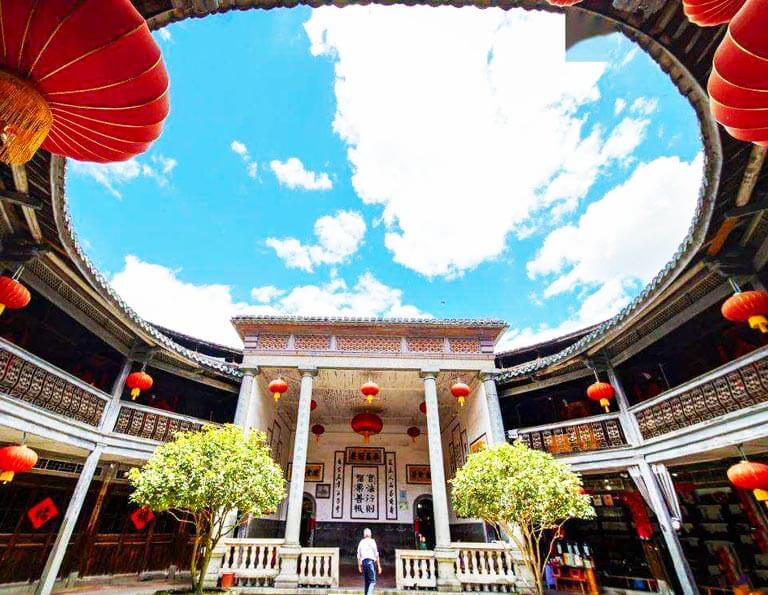
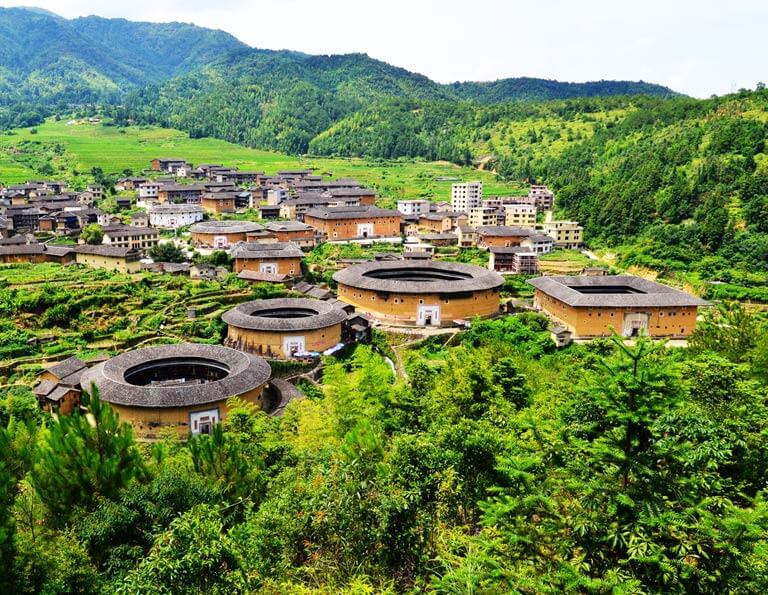
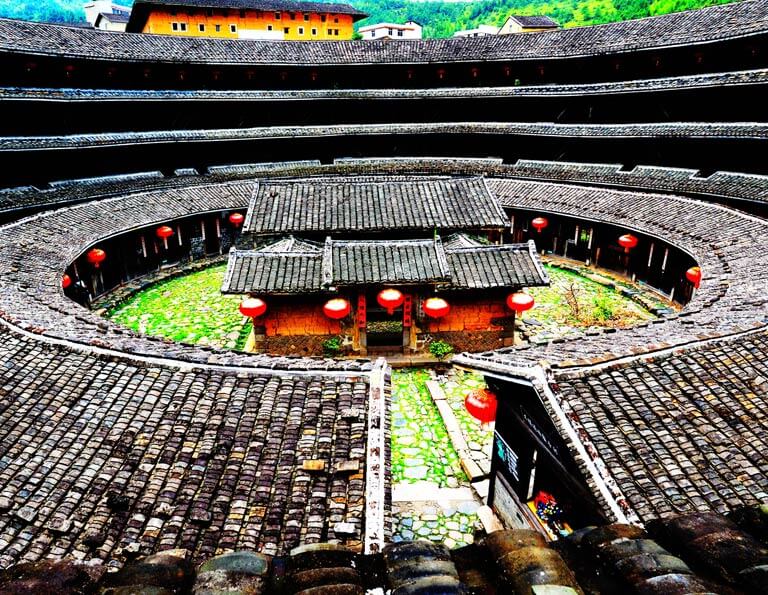
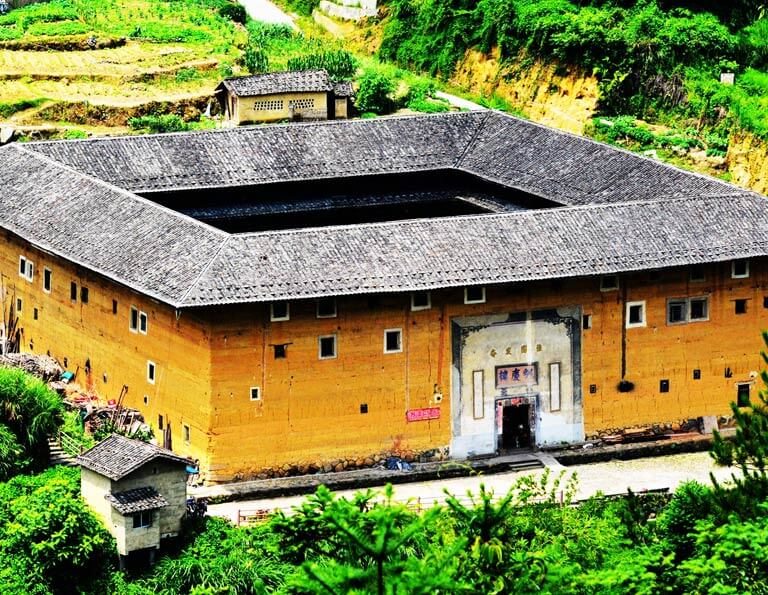
Good morning! Your guide and driver will meet you at your hotels and then take you to have a classic photography discovery of the refreshing Xiamen City.
First, head to Huandao Road, which is the main track of Xiamen International Marathon belting Xiamen Island. This beautiful “golden coastal line” built along the sea is praised as “Five Colors Road’ with the blue sea, golden beaches, green grassland, red track and gray highway! Take a relaxing scenic walk on the wooden plank paths to savor the pleasant seascape and palm grove, walk by various interesting sculptures, enjoy sunshine at a quiet soft beach, inhale the little salty sea breeze and feel the strong ideal island charm of Xiamen City. (Optional Activity: If you want to bike along Huangdao Road to discover more beautiful places scattered along, please tell your guide, which needs extra charge.)
Next, go to take photos of Nanputuo Temple (South Putuo Temple) of more than 1,000 years old. Enter the temple to admire a grand cluster of Buddhist halls with flying eaves and yellow tiles standing layer by layer under century-old trees and against the emerald mountain and pray in front of the holy Buddhas. Meanwhile, immerse into the peaceful atmosphere with locals taking a break around the large lotus pond, traditional Chinese pavilions, corridors, etc.. Later, walk about 20 minutes up to Wulao Peak to have a terrific bird’s eye view of the beautiful Xiamen University, Xiamen Port and the nearby islets on the blue sea!
Then, take a 20-minutes’ ferry to Gulangyu Island from Xiamen downtown. It is the No.1 attraction in Xiamen and also a UNESCO World Cultural Heritage with dozens of precious historical architectures built by people from the UK, Italy, France, Spain, Japan, etc. during the Second Opium War, thus, this little island of 1.88 s.q.m wide is regarded as “International Architecture Museum” with relic sites of 13 embassies from 18th-19th centuries. Roam along the old alleys to appreciate those left sites of churches, mansions, villas, banks and museums telling the historical stories of Gulangyu. Walk up to the most famous Sunlight Rock and catch the wonderful panorama of the large group of red and pink Western styled architectures with dotted emerald trees. Then, go to take pictures of the must-see Shuzhuang Garden that is the classic model of traditional Chinese garden on the sea. Take a leisure stroll amongst the twisty corridors, ancient halls with flying eaves and blue tiles, delicate pavilions, poetic gardens and ponds, etc. facing the shimmering sea and feel its traditional Chinese literal beauty contrasting to the western charm surrounding. Step into the outstanding Piano Museum which boasts an awesome collection of nearly 100 precious old pianos from all over the world for your worthy musical inspiration. Enjoy your architectural savory and then take the ferry back to Xiamen downtown.
After the visiting, Your guide and driver will escort you to your hotel in Xiamen. Have a good rest!
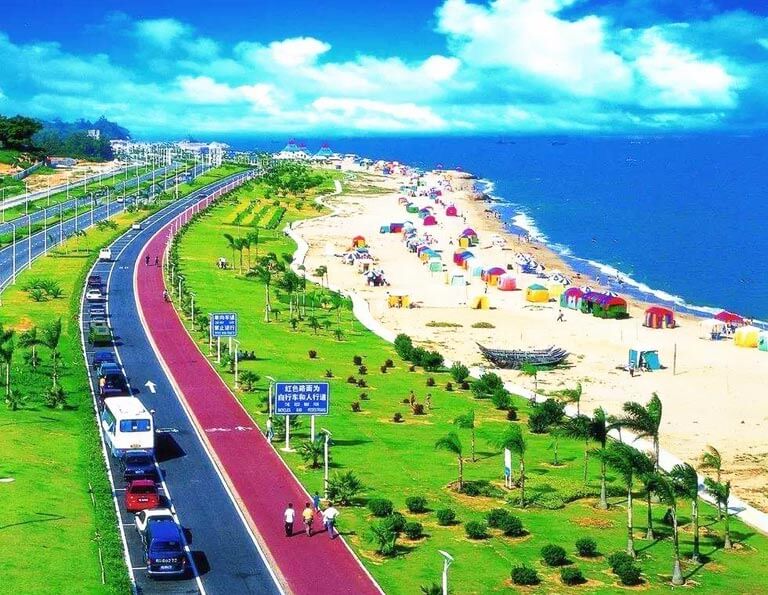
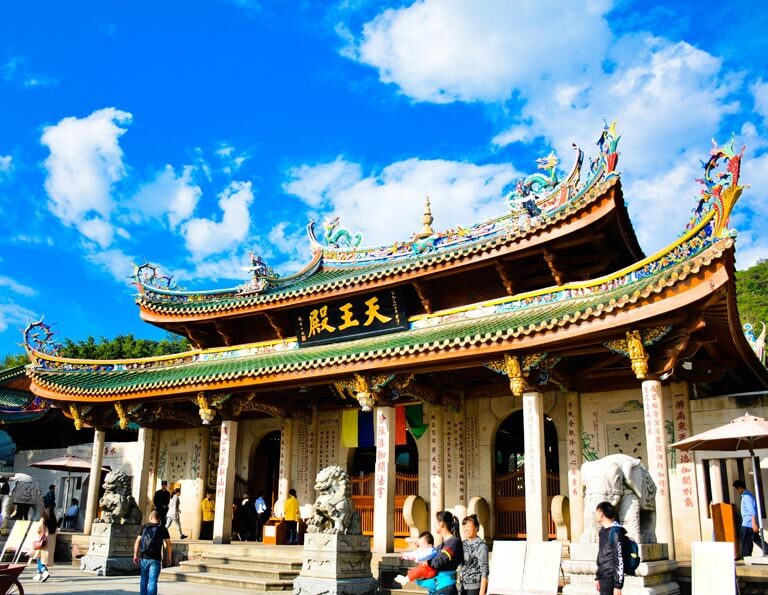
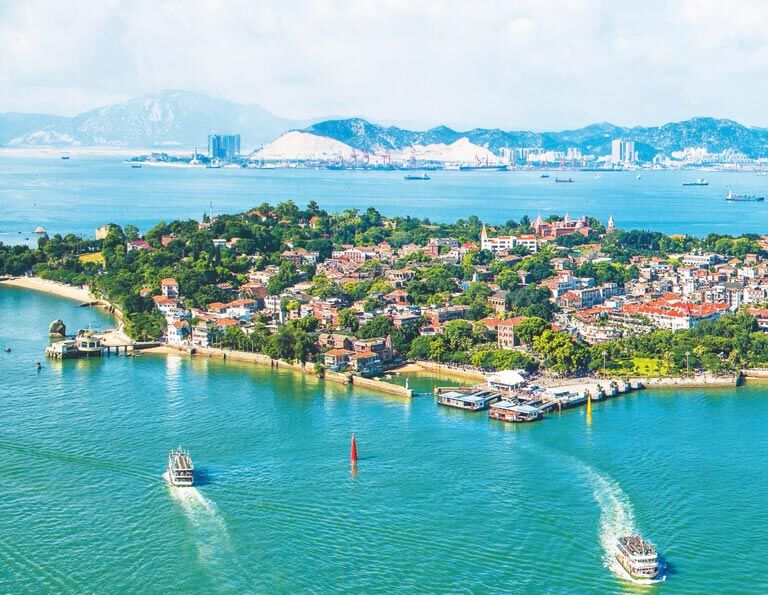
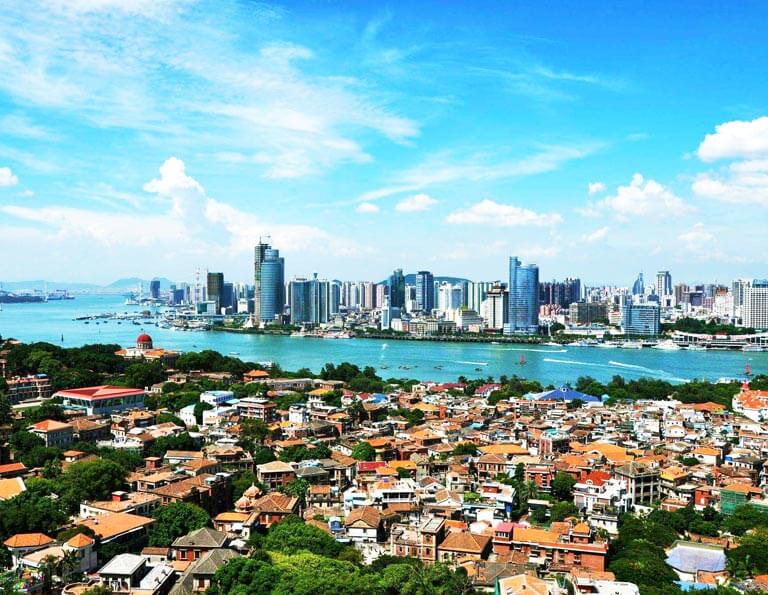
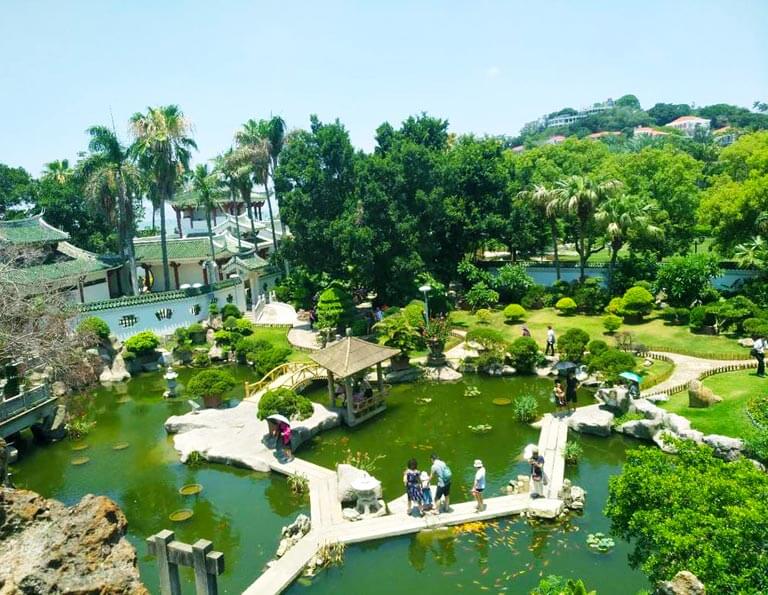
Today, after breakfast, you’ll take a 3 hours high speed train from Xiamen to Xiapu. You will arrive in Xiapu by midday, and after checking in the hotel and having lunch, take some rest.
In this afternoon, you’ll be driven about 20km to Xiaohao Village (about 35 mins’ driving), which is a famous place for shooting sandiness mudflat and sunset. When the sun is falling down, the shining golden glory paints the whole mudflat, and this is the best moment to record this splendid landscape of the setting sun and the mudflat. The east of Xiaohao is great for photographing with back lighting and the color of its beach changing with light, offering photographers hidden surprises. The west of Xiaohao is great for shooting with front lighting, photographing super large-scale scene of kelp harvest - fishing boats like mighty forces shuttling among the bamboo poles on the sea, which is like a grand movement composed by many dancing musical notes.
After that, get to Dongbi only 2km from Xiaohao to shoot the sunset. The golden color of the falling sun presents a golden silk dress for the mudflat and the soft lines of the sinuate water ways vary as the waves, some even performing “S” shapes, and this is super magnificent and rare. Various changing curves and lines are dyed with contrastive warm colors and blue colors under the orange and red sky backdrop. Furthermore, as some fishermen hang their fishing nets here on the mudflat, it is very lucky to shoot some pictures of the ordinary tools to increase your amounts of cultural themed photographic works of Xiapu.
After the shooting, be escorted back to your hotel and have a good sleep!
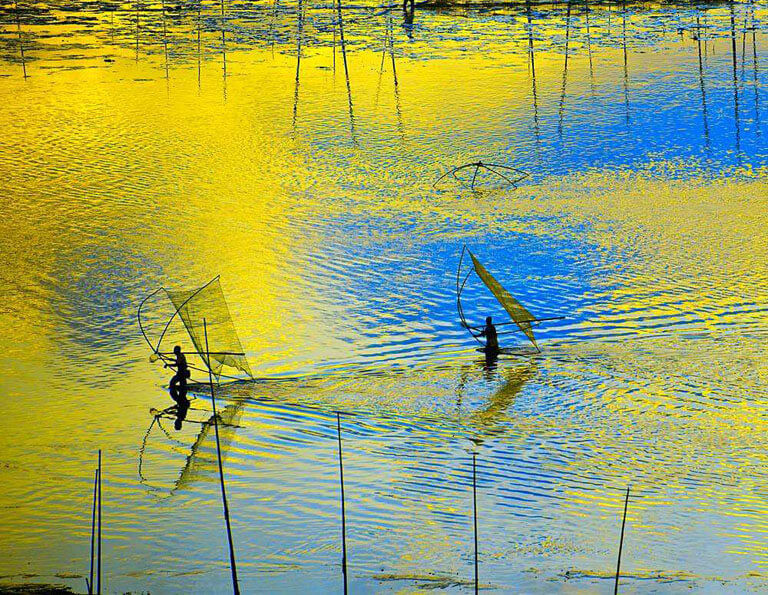
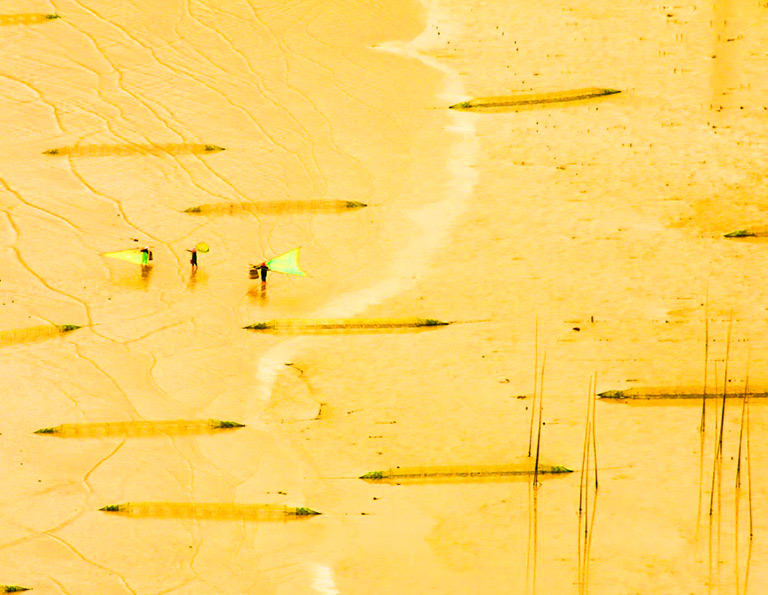
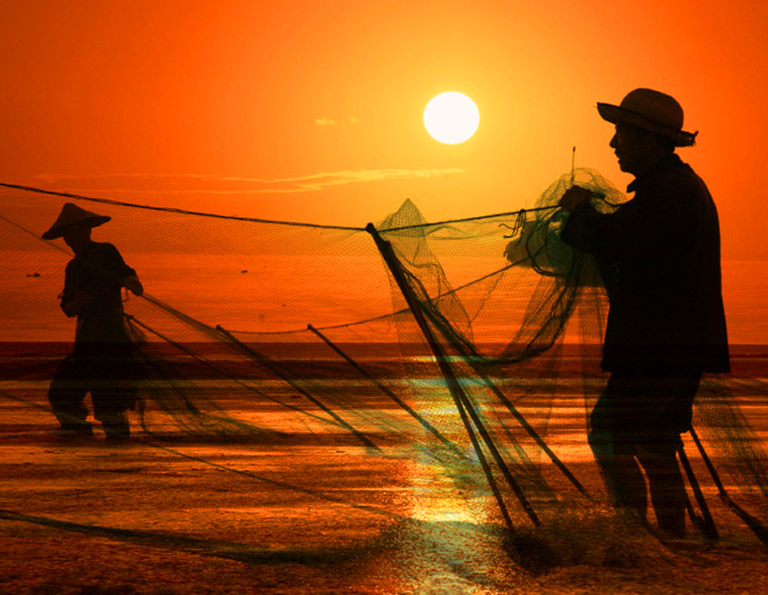
Today, try to get up early and head to Beiqi Village, which is the most wonderful shooting place for Xiapu mudflat, to take best photos of the beautiful sunrise. The morning golden sunshine spurting down on the sea changes the mudflat into a dreamy colorful world. Shoot the most famous tiger-skin-like stripes of the mudflat dyed under the glorious morning sunshine, shadows of fishermen, fishing boats, poles, etc. which compose a very harmonious painting with lyric dynamic charm, from which you will admire the “Magician Nature” who makes the extraordinarily common point, line, light and shadow full of magic. After shooting the sunrise of Beiqi, get back to your hotel and have breakfast.
After getting some rest, you’ll be escorted to Shajiang, the only place suitable to shoot in daytime. Shoot the elegant view of many big “S” shapes formed by layers of bamboo poles hanging sea kelp on the sea, which extends to the end of the sea. With fishers driving their boats shuttling back and forth among each curve, you can record the amazing landscape painting of mudflat. The best shooting angle is from the top floor of Xiapu No.2 Middle School.
Later, drive to Yantian Village, a main shooting place of local culture of fishing family. You can use your camera freely to record the real life and laboring scene of the piscatorial “Lian Family Boatmen” who are called the “sea gypsies” for long time living on their own fishing boats in Xiapu.
After the tour, your local guide and driver will escort you to Xiapu Railway Station for a high speed train to your next destination or home. Tour ends!
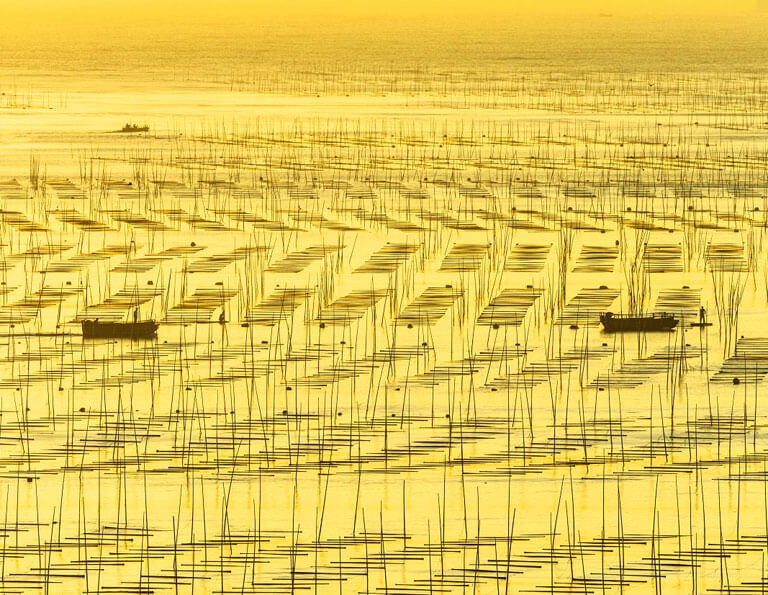
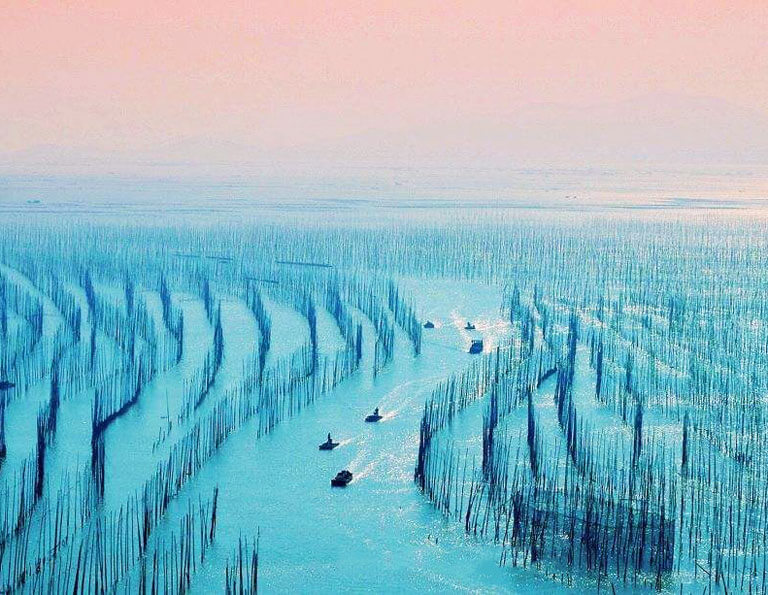
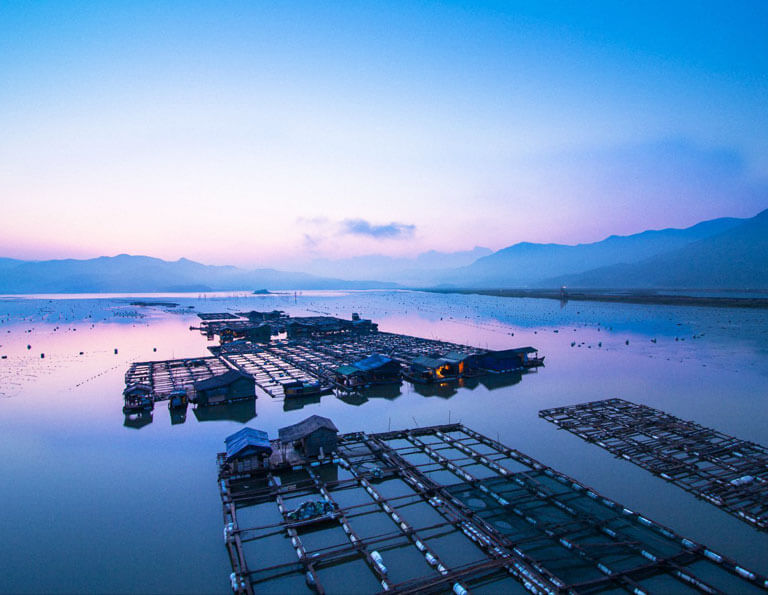
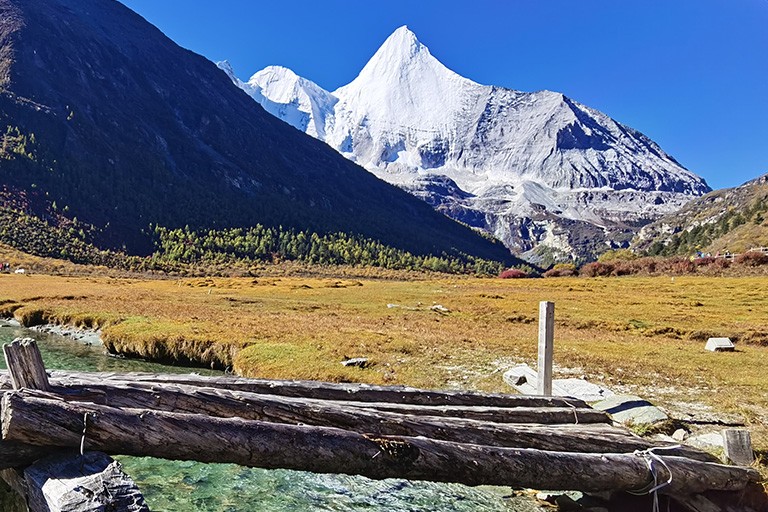
Chengdu / Daocheng

Chengdu / Huanglong / Jiuzhaigou / Ruoergai / Langmusi / Tangke / Hongyuan